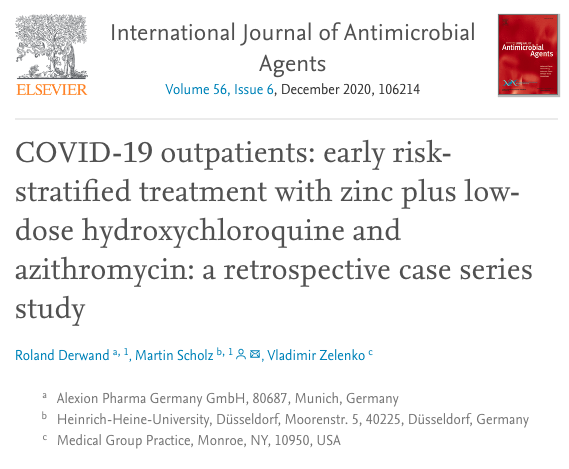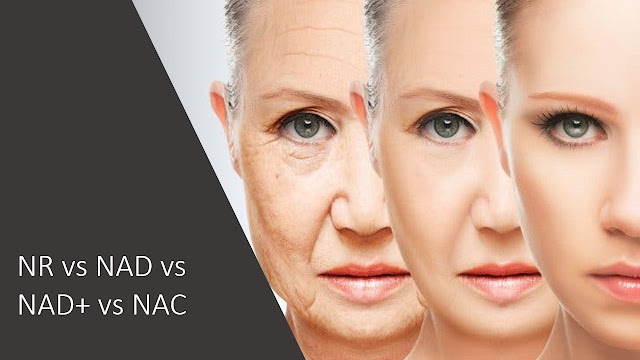Z Stack and Zelenko Protocols: Review
The Zelenko COVID-19 Protocols was developed by Dr Vladimir Zelenko. The protocol has as its centerpiece, but not exclusive piece, the combined use of Hydroxychloroquine (HCQ) and Zinc as a means by which a person can both help to prevent or mitigate the contraction of COVID-19, or can actually treat the disease once it has been diagnosed.
A retrospective study analyzing Dr Zelenko's patient data was accepted for publication after a rigorous peer review process. The study finds that early intervention and treatment of high-risk patients with COVID-19 resulted in significantly fewer hospitalizations and deaths. The treatment consisting of zinc, low-dose hydroxychloroquine (HCQ), and azithromycin, is also referred to as "The Zelenko Protocol." Dr Zelenko has since updated his protocols to incorporate new evidence.
He has since evolved his protocols to include a quercetin, zinc, vitamin D and C protocol for low-risk patients as well as guidelines for COVID-19 prevention.
In an effort to make it easier for patients, Dr Zelenko has developed an oral supplement that contains all four key ingredients: vitamin C, quercetin, vitamin D3 and zinc. It’s referred to as 'Z-Stack Supplement'. 
Z-Stack Vitamin cocktail provides key ingredients needed in order to help your body fight off this deadly invader.
The cost of the Z-STACK vitamin cocktail is $55 per bottle for a one month supply.
Where to buy Z-Stack: Z-stack is available on Dr Zelenko's website. Here is the link: Z Stack Supplement
Note: To get 5% OFF, please use this coupon code: DRFRANCIS
Zelenko COVID-19 Prophylaxis Protocol
The Zelenko prophylaxis protocol is sub-divided into:
- Prevention Protocol for Low and Moderate Risk Patients
- Prevention Protocol for High Risk Patients
Prophylaxis is an action taken to prevent or protect against a specified disease. Greek in origin, from the word "phylax", meaning "to guard" and "watching."
Low Risk Patients
Young healthy people do not need prophylaxis against COVID-19. In young and healthy people, this infection causes mild cold-like symptoms. It is advantageous for these patients to be exposed to Covid-19, build up their antibodies and have their immune system clear the virus. This will facilitate the development of herd immunity and help prevent future Covid-19 pandemics. However, if these patients desire prophylaxis against Covid-19, then they should take the protocol noted below.
Moderate Risk Patients
Patients from this category are healthy but have high potential viral-load exposure. This group includes medical personnel, caregivers of high-risk patients, people who use public transportation, first responders and other essential personnel who are crucial to the continued functioning of society. These patients should be encouraged to take prophylaxis against Covid-19 in accordance with the protocol noted below.
High Risk Patients
Patients are considered high risk if they are over the age of 45, or if they are younger than 45 but they have co-morbidities, that is, they have other health conditions that put them at risk. These patients have between a 5 to 10% mortality rate if they are infected with COVID-19. These patients should be strongly encouraged to take prophylaxis against COVID-19 in accordance with the protocol noted below.
Protocol for Low and Moderate Risk Patients:
- Zinc (elemental) 25mg 1 time a day (PubMed)
- Vitamin D3 5000 iu 1 time a day (vdnmeta.com)
- Vitamin C 500 mg twice a day (PubMed)
- Quercetin 500mg 1 time a day
If Quercetin is unavailable, then use Epigallocatechin-gallate (EGCG) 400mg 1 time a day (J. Agric. Food Chem. 2014)
Protocol for High Risk Patients:
- Hydroxychloroquine (HCQ) 200mg once a day for 5 days, then HCQ 200-400mg one time a week (ScienceDirect) (Find a Doctor)
- Vitamin D3 5000 IU/day or 50000 IU once a week
- Vitamin C 1000mg once a day
- Zinc 25-50mg/day
Zelenko vs FLCCC I-MASK+ protocol for prevention
In addition to what is recommended by the zelenko protocol, the FLCCC I-MASK+ prevention protocol includes mouthwash, melatonin and ivermectin as part of the prevention protocol. However, the I-MASK+ prevention protocol does not categorise the patients into low risk or high risk and does not include hydroxychloroquine. For the zelenko protocol, hydroxychloroquine is only recommended for those in high risk category.
In addition to what is recommended by the zelenko protocol, the FLCCC I-MASK+ prevention protocol includes mouthwash, melatonin and ivermectin as part of the prevention protocol. However, the I-MASK+ prevention protocol does not categorise the patients into low risk or high risk and does not include hydroxychloroquine. For the zelenko protocol, hydroxychloroquine is only recommended for those in high risk category.
Clinical evidence to date has reported promising results for Ivermectin in prevention, early treatment as well as late treatment for COVID-19. While both Ivermectin and Hydroxychloroquine might be useful for early treatment, Ivermectin has a broader potential benefit i.e. prevention, early treatment as well as late treatment / hospital treatment.
Quercetin is a viable stand-in, if you simply cannot get hydroxychloroquine or ivermectin. Quercetin works best when taken with vitamin C and Bromelain, as vitamin C helps activate it and bromelain helps with the absorption. Do not forget to combine it with zinc.
Zelenko Protocol - Treatment Plan for Patients with COVID-19 symptoms
Fundamental Principles (Dr Zelenko Protocol When to Start)
Treat patients based on clinical suspicion as soon as possible, preferably within the first 5 days of symptoms. Perform PCR testing, but do not withhold treatment pending results.
High risk patient - Older than 45, younger than 45 with co-morbidities, or clinically unstable
Patient Categories
Low risk patient - Younger than 45, no co-morbidities, and clinically stableHigh risk patient - Older than 45, younger than 45 with co-morbidities, or clinically unstable
Treatment Options
Low risk patients - over the counter options:
1. Elemental Zinc 50mg 1 time a day for 7 days (PubMed)
2.1. Quercetin 500mg 2 times a day for 7 days (PubMed) OR
2.2. Epigallocatechin-gallate (EGCG) 400mg 1 time a day for 7 days (J. Agric. Food Chem. 2014)
4. Vitamin D3 5000iu 1 time a day for 7 days
- Elemental Zinc 50-100mg once a day for 7 days
- Vitamin C 1000mg 1 time a day for 7 days
- Vitamin D3 10000iu once a day for 7 days or 50000iu once a day for 1-2 days
- Azithromycin 500mg 1 time a day for 5 days or
- Doxycycline 100mg 2 times a day for 7 days
- Hydroxychloroquine (HCQ) 200mg 2 times a day for 5-7 days (ScienceDirect) and/or
- Ivermectin 0.4-0.5mg/kg/day for 5-7 days (ivmmeta.com). Either or both HCQ and IVM can be used, and if one only, the second agent may be added after about 2 days of treatment if obvious recovery has not yet been observed etc. (Find a Doctor)
Both protocols can be viewed from his website.
- How much zinc you should take per day depends on the type and forms of zinc, as each supplement contains a different amount of 'elemental zinc'. The percentage of elemental zinc varies by form.
- For example, approximately 23% of zinc sulfate consists of elemental zinc; thus, 220 mg of zinc sulfate contains 50 mg of elemental zinc (Ref). Zinc picolinate (20% of elemental zinc), zinc ascorbate (15%), zinc chloride (48%), zinc carbonate (52%), zinc citrate (31%), zinc bisglycinate (25%) (Ref) and zinc gluconate (14%) and zinc oxide (80%) (Ref).
- Zinc sulfate is an inorganic form of zinc. Inorganic zinc is not as effective or useable by your body as chelated zinc sources. The best form of zinc is one that's chelated to ensure absorbability.
- Zinc gluconate and zinc glycinate are some of the popular chelated forms of over-the-counter supplements. Zinc acetate is the best zinc supplement to treat the common cold. Findings of a study published in Open Forum Infectious Diseases in 2017 recommended using acetate lozenges within 24 hours of the onset of a cold for a three-fold increase in the rate of recovery.
Zelenko vs FLCCC I-MASK+ protocol for treatment
In addition to what is recommended by the zelenko protocol, the FLCCC I-MASK+ treatment protocol includes mouthwash, melatonin and ivermectin and incorporates repurposed and newer agents like anti-androgens (spironolactone, finasteride and dutasteride), fluvoxamine and monoclonal antibodies as part of the treatment protocol. The I-MASK+ treatment protocol also categorises the treatment agents into first line agents and second line agents for those who do not respond to first line agents and for those high risk patients with co-morbidities.
In addition to what is recommended by the zelenko protocol, the FLCCC I-MASK+ treatment protocol includes mouthwash, melatonin and ivermectin and incorporates repurposed and newer agents like anti-androgens (spironolactone, finasteride and dutasteride), fluvoxamine and monoclonal antibodies as part of the treatment protocol. The I-MASK+ treatment protocol also categorises the treatment agents into first line agents and second line agents for those who do not respond to first line agents and for those high risk patients with co-morbidities.
Many successful studies utilised both ivermectin and hydroxychloroquine in combination. Further, the Zelenko protocol recommends that both hydroxychoroquine and ivermectin can be used together, especially for high risk patients. If you have started with only one, the second agent may be added after about 2 days of treatment if obvious recovery has not yet been observed.
Where to buy Z-Stack: Z-stack is available on Dr Zelenko's website. Here is the link: Z Stack Supplement
Note: To get 5% OFF, please use this coupon code: drfrancis
Related:









Comments